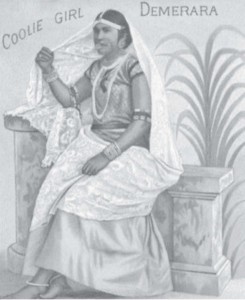 According to contemporary research, some 240,000 Indians were indentured to British Guiana plantations between 1838 and 1917. Their indentureship contracts stipulated the right to be repatriated after their contracts were completed, and, according to Dwarka Nath, in his book “A History of Indians in British Guiana”, (1950) some 75, 547 persons returned to India on official repatriation schemes between 1843 and 1949.
According to contemporary research, some 240,000 Indians were indentured to British Guiana plantations between 1838 and 1917. Their indentureship contracts stipulated the right to be repatriated after their contracts were completed, and, according to Dwarka Nath, in his book “A History of Indians in British Guiana”, (1950) some 75, 547 persons returned to India on official repatriation schemes between 1843 and 1949.
Statistics of the British Guiana Immigration Agent General’s report of 1881 indicate that from 1843 to 1881, 17,235 Indians left the colony for India; in 1929, 520 Indians departed from Georgetown for Calcutta. Other immigration records detail that from November 1850 to December 1877, 27 ships sailed from British Guiana to the Port of Calcutta with 9, 833 Indians onboard. From 1851 to 1859, seven ships took 1, 444 Indians to the Port of Madras from British Guiana.
These ships included the Louisa Baillie and the Water Witch; both departed British Guiana in May 1843, and the Malabar, which sailed from British Guiana to India in 1879. According to the Daily Argosy, the SS Orna arrived at Port Georgetown in January 1949 and transported almost 400 repatriated Indians accompanied by Dr J.B. Singh; Dwarka Nath of the colonial Immigration Department; chemists H. Persaud and SK Singh, and government dispenser Shalim Khan, though several repatriates died en route.
In a sample of return migration from British Guiana, Jamaica, and Trinidad to Calcutta between 1850 and 1869 (L. Roopnarine 2009) it was also noted that some never survived the trip back home: during the period sampled, of the 6,305 passengers that included adults, children and infants, 379 persons had died.
It was also stated in the Daily Argosy that after a period where repatriation was discouraged by the Indian government due to that country’s declining economic circumstances, repatriation was once again being encouraged in the 1950s; 350- 400 Indians were being asked to pay for their repatriation at a cost of $30 for men and $20 for women who had arrived on the colony after 1898.




